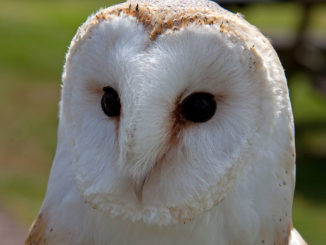
A few summers ago we wrote that we didn’t hay the grass fields because the soil needed improvement.
In July 2016, a local livestock producer harvested 1,018 bales of grass hay from the three two-acre fields. This is significantly more hay than usually produced from this farm.
What factors contributed to harvesting more hay than expected?
- Fertilizer
- Lime
- Water
- Mulch
- Rest
Fertilizer and lime
We’ve previously documented some of the fertilizer and lime applications on the fields. The rate of fertilizer application was fairly light, as was the application of pelletized lime. Nevertheless, this combination was enough to unlock and supplement the nutrients bound in the somewhat acidic soil. Even though the summer of 2015 was quite dry, we were pleased to see the grass show more vigor: it was taller, greener, and more dense.
Water
In 2013 and 2014 we also provided supplemental water to the fields to help build strong root systems. Our goal was to create stronger, more resilient grasses. When grasses are healthy, they can compete successfully with a relatively low weed load. We especially see this in the fields next to Ferguson Road where soils with a bit more moisture contribute to very vigorous grass production.
Mulch
In those years, instead of mowing and exporting the grass we mowed the fields and left the cut grass to decompose. Mulching the fields helped to retain soil moisture, especially in the dry summer of 2015. The decomposing plant tops contribute humus and add carbon to the soil. These soil factors support stronger populations of soil microbes.
Rest
And then we let the fields rest. Grazing animals were removed last year. We waited and watched while the grasses responded by producing a tremendous amount of top growth.
Harvest
The arrangement we made with the local livestock producer was that he would leave us a percentage of the harvest. There was so much hay produced that he increased that percentage to one-half of the total bales produced. We don’t need very much grass hay, so the District donated hundreds of bales to Sound Equine Options, a regional non-profit formed by a veterinarian to help horses live better lives.
This arrangement to produce hay for a portion of the harvest also meant that the District did not have to spend money paying a contractor to mow the fields. The downside is that we exported all the nutrients from the plant tops off the farm. On the other hand, the farmer cut the grass fairly high, giving the grasses a head start on regrowth. (While he probably did this because he was unfamiliar with the conditions in the fields, it was nevertheless good for the grasses!)
Natural predation
Our resident barn owl (“Barney”) now has better hunting of rodents on our fields. Local kestrels have also been working the fields. We’ve put up a kestrel box with the hope of encouraging a nesting pair to take up residence. We don’t use poisons to control voles, moles, and gophers because those toxins are sometimes consumed by other animals. We’re attempting to use more natural methods to keep rodent populations in check.


